Input interpretation

3-iodo-4, 5-dimethoxybenzaldehyde
Chemical names and formulas
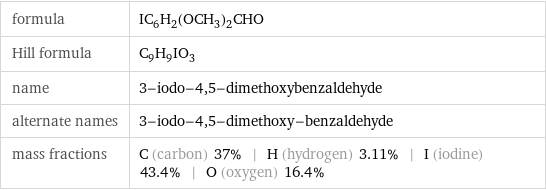
formula | IC_6H_2(OCH_3)_2CHO Hill formula | C_9H_9IO_3 name | 3-iodo-4, 5-dimethoxybenzaldehyde alternate names | 3-iodo-4, 5-dimethoxy-benzaldehyde mass fractions | C (carbon) 37% | H (hydrogen) 3.11% | I (iodine) 43.4% | O (oxygen) 16.4%
Lewis structure
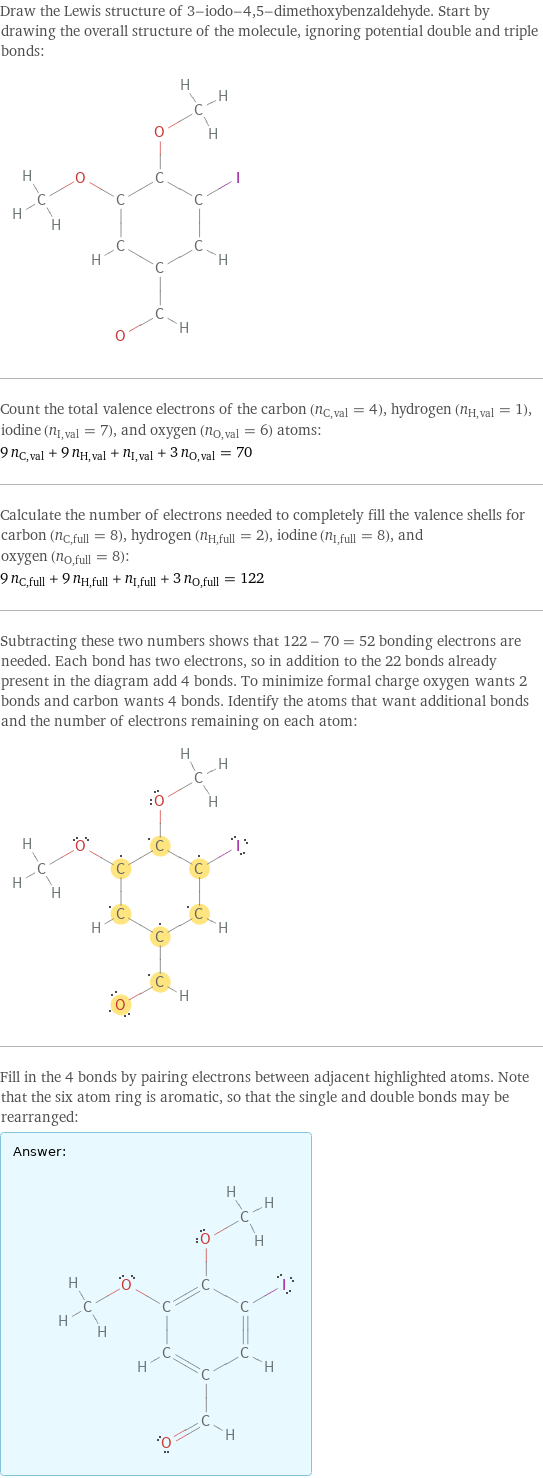
Draw the Lewis structure of 3-iodo-4, 5-dimethoxybenzaldehyde. Start by drawing the overall structure of the molecule, ignoring potential double and triple bonds: Count the total valence electrons of the carbon (n_C, val = 4), hydrogen (n_H, val = 1), iodine (n_I, val = 7), and oxygen (n_O, val = 6) atoms: 9 n_C, val + 9 n_H, val + n_I, val + 3 n_O, val = 70 Calculate the number of electrons needed to completely fill the valence shells for carbon (n_C, full = 8), hydrogen (n_H, full = 2), iodine (n_I, full = 8), and oxygen (n_O, full = 8): 9 n_C, full + 9 n_H, full + n_I, full + 3 n_O, full = 122 Subtracting these two numbers shows that 122 - 70 = 52 bonding electrons are needed. Each bond has two electrons, so in addition to the 22 bonds already present in the diagram add 4 bonds. To minimize formal charge oxygen wants 2 bonds and carbon wants 4 bonds. Identify the atoms that want additional bonds and the number of electrons remaining on each atom: Fill in the 4 bonds by pairing electrons between adjacent highlighted atoms. Note that the six atom ring is aromatic, so that the single and double bonds may be rearranged: Answer: | |
3D structure
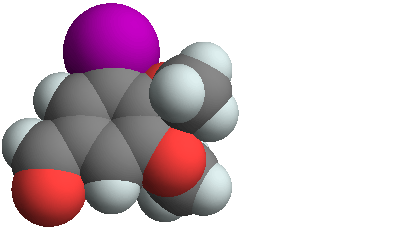
3D structure
Basic properties
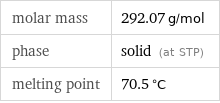
molar mass | 292.07 g/mol phase | solid (at STP) melting point | 70.5 °C
Units

Chemical identifiers
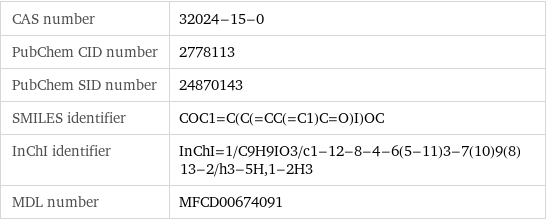
CAS number | 32024-15-0 PubChem CID number | 2778113 PubChem SID number | 24870143 SMILES identifier | COC1=C(C(=CC(=C1)C=O)I)OC InChI identifier | InChI=1/C9H9IO3/c1-12-8-4-6(5-11)3-7(10)9(8)13-2/h3-5H, 1-2H3 MDL number | MFCD00674091